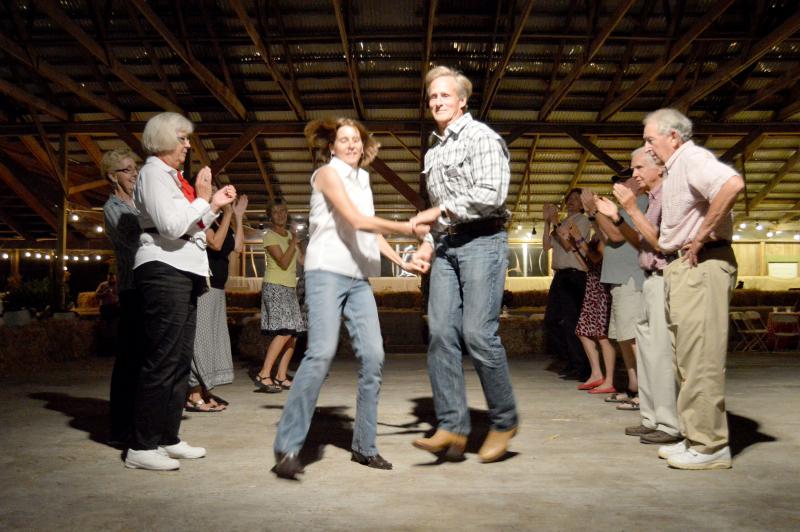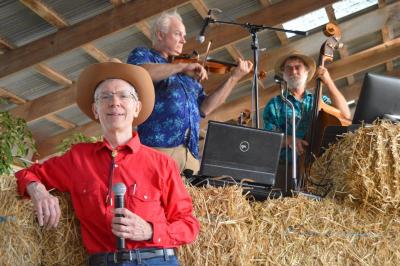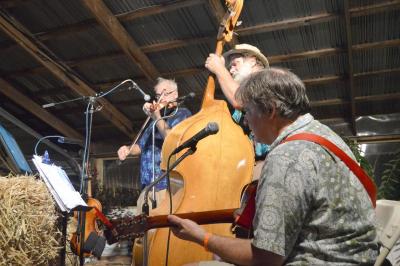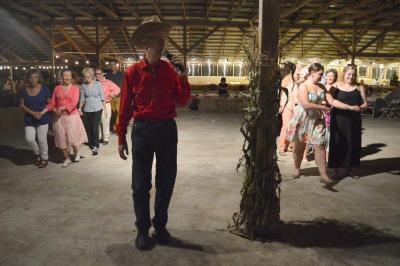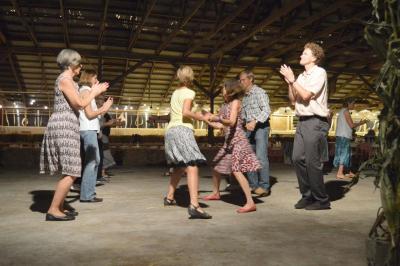Dancers do-si-do for land conservation
Under the guidance and encouragement of dance caller Tony Parkes, supporters of land conservation came out to Sylvan Nursery to do-si-do and promenade the night away.
Held every year on the Saturday before Labor Day weekend, the Barn Bash has become the main fundraising event for Dartmouth Natural Resources Trust. Sylvan Nursery’s large, spacious barn on Horseback Road became the site for a night of food and square dancing.
Rather than donning the typical, dressy ensemble one might wear to a traditional gala event, some arrived in checkered shirts, jeans, boots and cowboy hats.
“When we first started it, one of our board members at the time remembered going to square dances when she was little,” said Dexter Mead, executive director of the Trust. “I think that people were a little skeptical at first, but it proved to be a lot of fun, and it’s remained popular ever since.”
Mead said the Barn Bash, now in its 10th year, normally draws a crowd of about 300 people. While the bash helps the group with land conservation efforts, Dartmouth Natural Resources Trust also is in the middle of a $1.2 million capital campaign to help build a new headquarters on Helfand Farm.
“The capital campaign is doing well. We have over $700,000 in gifts and pledges,” said Mead.
The project will include renovations to the historic house on the property as well as constructing a new addition to the existing building. He said there are five contractors making bids on the project at the moment, and the group hopes construction will begin in October.
The Barn Bash came together with help from the band Three Cats and a Dog and dance caller Tony Parkes, who led dozens of people through intricate dance routines.
Parkes, a caller based in Billerica, said he’s led square dancers throughout the United States and Europe. He’s been calling for 51 years.
“I started as a kid in summer camp,” said Parkes. “I was dancing earlier than that, but at camp, they saw I was interested. I was mouthing the calls with the guy up on the stage.”
“American square dancing is almost unique in that it includes a set of directions that’s called out to the dancers as they’re dancing. The dance moves come from Europe, but the caller is an American innovation,” he said.
Parkes said that, while some people view square dancing as a somewhat plain American institution, the dance’s origins have roots throughout the world.
“Calling was an African American innovation back in the early 19th century. Square dancing is European dance steps combined with the African tradition of chanting,” said Parkes. “It’s multicultural. It has English, Irish, Scottish, French, Spanish, Native American and African American elements. It’s just as big a melting pot as America is.”
Groups of eight danced in tandem as Parkes called out specific instructions over the microphone. Many of the moves involved switching partners and working together with the entire group.
“It’s a smile-producing, endorphine-producing experience. It’s so much fun,” said Hope Swift, who danced late into the evening. “Like [Parkes] said, ‘Anybody that can walk, can dance.’ He made it very accessible to everyone.”
Meghan Lemay said she hasn’t tried square dancing since high school, but after about 30 minutes out on the dance floor, she felt comfortable jumping in because there was someone who could lead her through the moves.
“It was a blast. Now I want to do it more often,” said Lemay.



